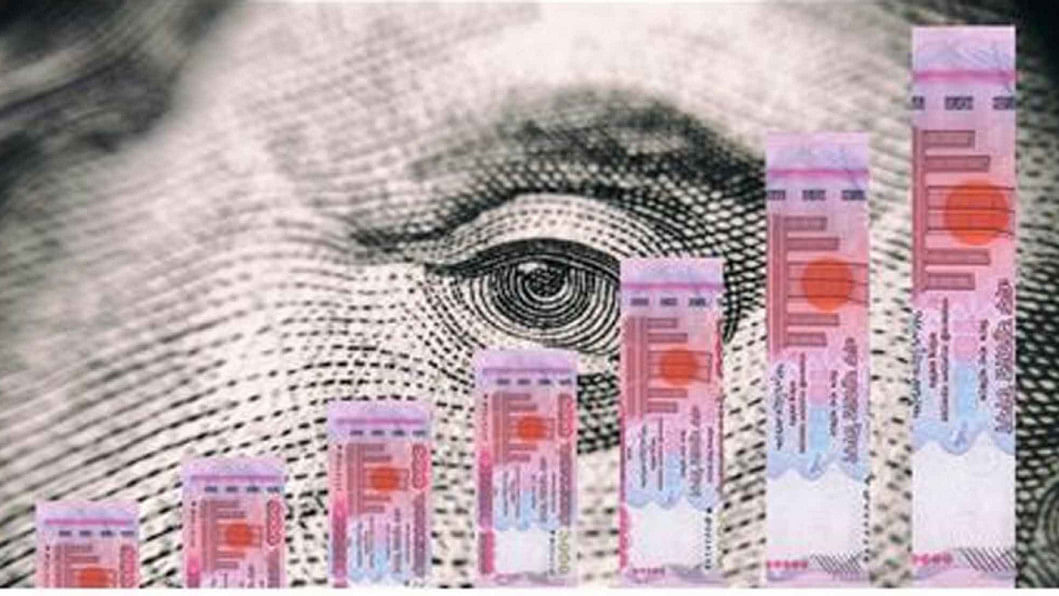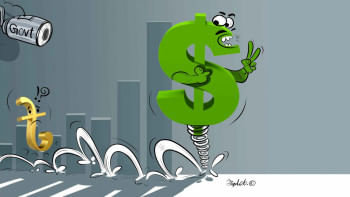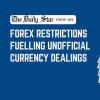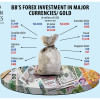What made the dollar crisis worse?

One dollar now costs almost Tk 100. The taka has been losing its value against the US dollar for months, with no signs of it changing. The collapse of the value of the taka or the exchange rate, which tells us the amount of US dollar one unit of taka can buy, has been causing further panic in the foreign currency market. When the price of the dollar increases, taka becomes cheaper, making import payments greater than before, and leading to inflation through the import channel. It signals macro instability.
Though exports and remittances are encouraged by a weaker taka, it doesn't necessarily mean they would rise enough to offset the increase in import bills. And that has been happening in Bangladesh in recent months, making current account deficits worse than before. It will eventually erode foreign reserves, which has already decreased by USD 7 billion since August 2021, giving rise to the possibility of a financial crisis if the trend continues.
To understand how to prevent the dollar drain from Bangladesh, we need to first understand what caused the price hike of the dollar in the first place. Defective policymaking is at the root of it. And the taka will collapse further, either now or in the immediate future, unless the faulty method of fixing the exchange rate by the central bank is corrected or disbanded for good. Even after committing to a floating exchange rate since 2003, Bangladesh Bank (BB) kept on heavily fixing the exchange rate. This decision was taken not because of any research findings, but because of political preferences. That is not how economics works.
A simple regression over 2003-2013 would suggest a Tk 2 increase in the dollar's value every year, making the dollar's price Tk 98 or so – which is close to the current market price. Had BB followed an econometric model to make the change monthly, we wouldn't have faced this sudden shock and the ensuing volatility in the whole financial market.
The question may arise: Why do we need to devalue the taka every year against the dollar? It is in our best interest to do so because we need to maintain a steady path of the real exchange rate index, so we don't lose export competitiveness and remittance inflow through the banking channel. Since Bangladesh's inflation is at least 3-5 percentage points higher than US inflation, the taka must lose its value against the dollar accordingly to do justice to exporters, remitters, the country's balance of payment, and finally, its foreign reserves.
The index of the real effective exchange rate was 100 in 2016, and it tiptoed up to 115 by October 2020. That wouldn't have happened had BB paid attention to the math. BB kept taka's value artificially high for six years, hurting exports and remittances. The finance ministry stepped in to fight the disease of anaemic performance in remittance and invented a vitamin tablet in the form of "incentives". However, a correct exchange rate doesn't require any frills. These patchy solutions ignore demand and supply forces.
Both BB and the finance ministry were wrong in predicting the exchange rate and kept dollar's value forcibly depressed. Remittances and exports performed worse than imports. The current account balance, which was in an impressive position for 14 years since the early 2000s, started declining since FY2016, proving that giving incentives was not the right solution. Foreign reserves remained in the doldrums for three years since 2016. Thus, BB got enough signals to correct the exchange rate by devaluing the taka, but it didn't. The recent volatility and dollar crisis are nothing but the results of wrong policies from BB and the finance ministry.
That said, other reasons have also contributed to the dollar crisis. Illicit financial transfers amounting to almost USD 8 billion per year, as the World Bank estimates, are destabilising the market. Over-invoicing by importers and under-invoicing by exporters seem to be rampant – even though the official data are hard to collect.
The recent move by the finance minister to validate laundered money has not only placed a stain on the budget, but has also emboldened the asset traffickers more than ever before. Money that has landed overseas won't come back. Rather, new launderers will join the queue. They will find it rewarding to hoard more dollars and smuggle them overseas whenever possible.
The finance minister also predicted that capital flight will get reversed just because foreign inflation is high. That's incorrect. Foreign inflation figures, such as US inflation of 8.5 percent, may look higher than Bangladesh's 6 percent – but Bangladesh Bureau of Statistics (BBS) figures are particularly inaccurate for inflation and unemployment.
Despite facing the great financial crisis of 2008-2009, the US experienced a huge inflow of foreign funds, which Ben Bernanke, the Fed chair, termed as the "saving glut." The Fed is raising policy rates desperately to curb inflation, and it will make the dollar stronger globally. If BB fails to grasp this new development in determining the exchange rate, the dollar crisis will move from bad to worse.
Dr Birupaksha Paul is a professor of economics at the State University of New York at Cortland in the US and former chief economist of Bangladesh Bank.

 For all latest news, follow The Daily Star's Google News channel.
For all latest news, follow The Daily Star's Google News channel. 









Comments